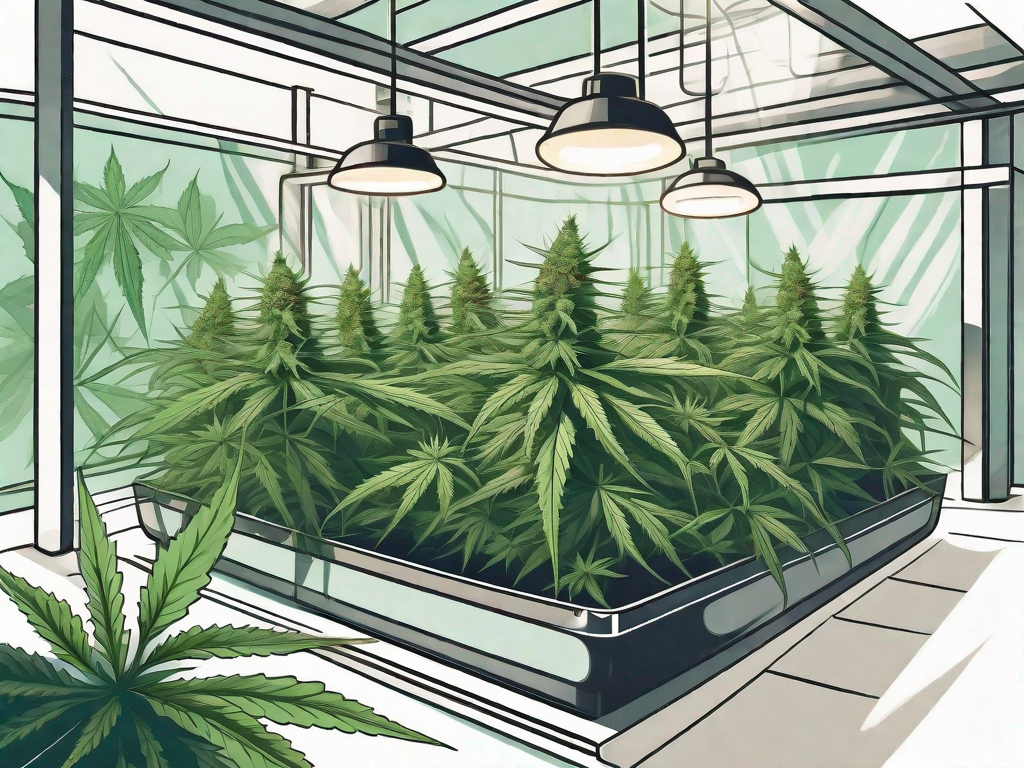Maximize Your Cannabis Yield: Proven Strategies for Bountiful Harvests

Maximize Your Cannabis Yield: Proven Strategies for Bountiful Harvests
Growing cannabis, whether for personal use or commercial purposes, is an art that requires knowledge, patience, and a keen eye for detail. The goal is always to maximize yield, and this can be achieved through a variety of proven strategies. In this guide, we'll delve into the best practices that can lead to bountiful harvests.
Understanding the Basics
Before diving into the specifics, it's crucial to understand the basics of cannabis cultivation. This includes understanding the plant's life cycle, its nutritional needs, and the ideal environmental conditions for growth.
The cannabis plant goes through several stages of growth, including germination, seedling, vegetative, and flowering stages. Each stage has specific requirements in terms of light, temperature, and nutrients. By understanding these needs, you can create an environment that allows your plants to thrive.
Another fundamental aspect of cannabis cultivation is choosing the right strain. Different strains have different growth characteristics and yield potential. Therefore, it's essential to choose a strain that matches your growing conditions and yield expectations.
Optimizing the Growing Environment
Lighting
Light is one of the most critical factors in cannabis cultivation. The amount, quality, and duration of light your plants receive directly impact their growth and yield. Therefore, it's essential to provide your plants with adequate light, especially during the vegetative and flowering stages.
For indoor growers, high-intensity discharge (HID) lights, such as metal halide (MH) and high-pressure sodium (HPS) lamps, are commonly used. However, LED lights are becoming increasingly popular due to their efficiency and longevity.
Outdoor growers, on the other hand, need to consider the position of their garden to maximize sunlight exposure. The garden should be located in a spot that gets at least six hours of direct sunlight each day.
Temperature and Humidity
Temperature and humidity also play a significant role in cannabis cultivation. Cannabis plants prefer a temperature range of 70-85 degrees Fahrenheit during the vegetative stage and 70-80 degrees during the flowering stage. Humidity levels should be kept between 40-70% during the vegetative stage and reduced to 40-50% during the flowering stage.
Maintaining these conditions can be challenging, especially for indoor growers. However, with the right equipment, such as heaters, air conditioners, humidifiers, and dehumidifiers, it's possible to create the ideal growing environment.
Nutrition and Watering
Cannabis plants require a variety of nutrients to grow and produce a high yield. These include macronutrients, such as nitrogen (N), phosphorus (P), and potassium (K), and micronutrients, such as calcium, magnesium, and iron.
It's essential to provide your plants with a balanced diet, as nutrient deficiencies or excesses can lead to growth problems and reduced yield. There are many commercial nutrient solutions available that are specifically designed for cannabis cultivation. However, it's also possible to make your own nutrient mix using organic materials.
Watering is another crucial aspect of cannabis cultivation. Overwatering or underwatering can lead to a variety of problems, including root rot and nutrient lockout. Therefore, it's important to water your plants properly, taking into account factors such as the size of the plant, the size of the pot, the temperature, and the humidity.
Training Techniques
Training techniques are methods used to manipulate the growth of the cannabis plant in order to maximize yield. These techniques include topping, low stress training (LST), high stress training (HST), and Screen of Green (ScrOG).
Topping involves cutting off the top of the plant to encourage the growth of two main colas instead of one. This can result in a higher yield as the plant's energy is distributed to more bud sites.
LST involves bending and tying down branches to create a more even canopy, which allows more light to reach the lower buds. HST, on the other hand, involves more drastic measures, such as breaking or damaging the plant's stems to stimulate growth.
ScrOG is a technique where a screen is placed above the plants, and the branches are woven through the screen as they grow. This creates a flat, even canopy that maximizes light exposure and yield.
Harvesting and Curing
The final steps in the cultivation process are harvesting and curing, which are crucial for maximizing yield and quality. Harvesting should be done when the majority of the trichomes on the buds have turned milky white or amber. Harvesting too early or too late can result in a lower yield and less potent buds.
After harvesting, the buds need to be dried and cured. This process involves hanging the buds in a dark, cool, and humid environment for several days to weeks. Curing allows the buds to develop their full flavor and potency, while also preventing mold and mildew.
By following these proven strategies, you can maximize your cannabis yield and enjoy bountiful harvests. Remember, cannabis cultivation is a learning process, and it takes time and experience to perfect your technique. So, don't be discouraged if your first few harvests aren't as big as you'd like. Keep learning, keep experimenting, and most importantly, keep growing.
